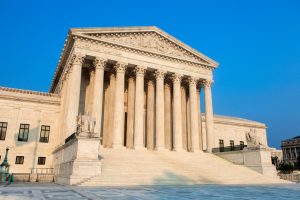August 6, 2025
The Wandering Supreme Court: A Journey Through Its Three Historic Homes

WASHINGTON, D.C. — The United States Supreme Court, an emblem of justice and authority in American life, boasts a history that extends beyond the decisions it renders. The court, established in 1789, has not always occupied the imposing marble facade that we recognize today in Washington, D.C. In fact, its journey across three different cities mirrors the growth and shifting centers of power in the nascent United States.
The Supreme Court initially convened in New York City, the country’s first capital, where it held sessions at the Merchants Exchange Building. It was a period characterized by much uncertainty and improvisation, aspects that marked the court’s early years. The justices, much like the nation, were finding their footing.
In 1790, as the capital moved to Philadelphia, so too did the Supreme Court. It found its temporary home in Independence Hall, sharing space with the Congress. This relocation was more than just a change of address; it was part of the larger compromise between the Northern and Southern states, shaping the early political landscape of America.
However, the court's most significant move came in 1800 when the national capital was once again relocated, this time to the newly established city of Washington, D.C. Initially, the Supreme Court met in various makeshift locations, including homes and taverns, particularly when the Capitol was under construction or repair. It wasn’t until 1935, long after the government had settled in, that the Supreme Court moved into its current home, a standalone building designed by architect Cass Gilbert. This structure, with its classical lines and commanding steps, was the first to be built specifically for the court, symbolizing its importance and independence within the federal government.
The Supreme Court's journey from New York to Philadelphia, and finally to Washington, D.C., is a reflection of the broader story of America’s development. Each move was influenced by political, social, and economic forces, and the court’s history in these cities provides a fascinating glimpse into the evolving nature of American governance.
Today, the Supreme Court stands not only as a beacon of justice but also as a testament to the country’s dynamic history, reminding us of the continuous evolution of American institutions. The court's past, marked by temporary homes and itinerant beginnings, contrasts sharply with the stability it now projects amidst the ever-shifting landscape of U.S. law and politics.